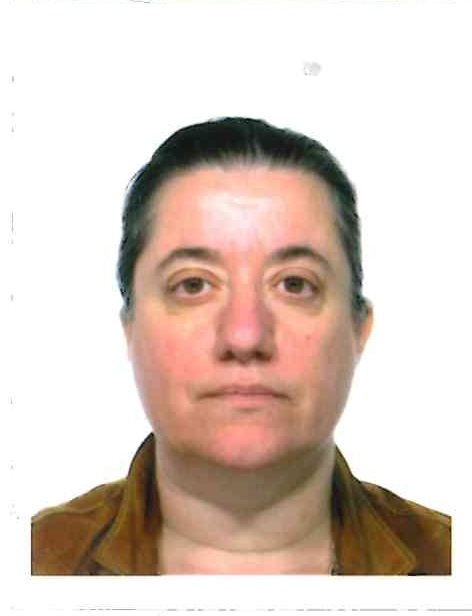Studying at the University of Verona
Here you can find information on the organisational aspects of the Programme, lecture timetables, learning activities and useful contact details for your time at the University, from enrolment to graduation.
Academic calendar
The academic calendar shows the deadlines and scheduled events that are relevant to students, teaching and technical-administrative staff of the University. Public holidays and University closures are also indicated. The academic year normally begins on 1 October each year and ends on 30 September of the following year.
Course calendar
The Academic Calendar sets out the degree programme lecture and exam timetables, as well as the relevant university closure dates..
| Period | From | To |
|---|---|---|
| 1° periodo di lezioni - 12 CFU | Sep 23, 2019 | Dec 14, 2019 |
| 1° periodo di lezioni | Sep 30, 2019 | Dec 14, 2019 |
| Periodo riservato ad eventuali recuperi di lezioni - dicembre 2019 | Dec 16, 2019 | Dec 17, 2019 |
| 2° periodo di lezioni - febbraio/aprile 2020 - 12 CFU | Feb 6, 2020 | Apr 6, 2020 |
| 2° periodo di lezioni - febbraio/aprile 2020 | Feb 10, 2020 | Apr 6, 2020 |
| 2° periodo di lezioni - aprile/maggio 2020 | Apr 15, 2020 | May 7, 2020 |
| 2° periodo di lezioni - aprile/maggio 2020 - 12 CFU | Apr 15, 2020 | May 12, 2020 |
| Periodo riservato ad eventuali recuperi di lezioni - maggio 2020 | May 8, 2020 | May 9, 2020 |
| Session | From | To |
|---|---|---|
| Sessione straordinaria - studenti f.c. e insegnamenti del 1° periodo | Dec 18, 2019 | Dec 23, 2019 |
| Sessione invernale - 1° appello | Jan 8, 2020 | Jan 17, 2020 |
| Sessione invernale - 2° appello | Jan 28, 2020 | Feb 6, 2020 |
| Sessione straordinaria - studenti f.c. - aprile 2020 | Apr 7, 2020 | Apr 9, 2020 |
| Sessione estiva - 3 appelli | May 12, 2020 | Jul 25, 2020 |
| Sessione autunnale - 1° appello | Aug 26, 2020 | Sep 5, 2020 |
| Sessione autunnale - 2° appello | Sep 21, 2020 | Sep 30, 2020 |
| Session | From | To |
|---|---|---|
| Sessione autunnale - ottobre 2019 | Oct 21, 2019 | Oct 22, 2019 |
| Sessione invernale - febbraio 2020 | Feb 7, 2020 | Feb 7, 2020 |
| Sessione invernale - marzo 2020 | Mar 18, 2020 | Mar 20, 2020 |
| Sessione estiva - giugno 2020 | Jun 25, 2020 | Jun 26, 2020 |
| Period | From | To |
|---|---|---|
| Festa di Ognissanti | Nov 1, 2019 | Nov 1, 2019 |
| Festa dell'Immacolata | Dec 8, 2019 | Dec 8, 2019 |
| Vacanze di Natale | Dec 24, 2019 | Jan 6, 2020 |
| Vacanze di Pasqua | Apr 10, 2020 | Apr 14, 2020 |
| Festa della Liberazione | Apr 25, 2020 | Apr 25, 2020 |
| Festa del lavoro | May 1, 2020 | May 1, 2020 |
| Festa del Santo Patrono | May 21, 2020 | May 21, 2020 |
| Festa della Repubblica | Jun 2, 2020 | Jun 2, 2020 |
Exam calendar
Exam dates and rounds are managed by the relevant Law Teaching and Student Services Unit.
To view all the exam sessions available, please use the Exam dashboard on ESSE3.
If you forgot your login details or have problems logging in, please contact the relevant IT HelpDesk, or check the login details recovery web page.
Should you have any doubts or questions, please check the Enrollment FAQs
Academic staff
 mariacaterina.baruffi@univr.it
mariacaterina.baruffi@univr.it
 andrea.carlevaris@univr.it
andrea.carlevaris@univr.it

Dalla Massara Tommaso
 tommaso.dallamassara@univr.it
tommaso.dallamassara@univr.it
 +39 045 8028810
+39 045 8028810
 roberto.flor@univr.it
roberto.flor@univr.it
 giorgia.guerra@univr.it
giorgia.guerra@univr.it
 rita.maggi@univr.it
rita.maggi@univr.it
 martina.menon@univr.it
martina.menon@univr.it
 lorenzo.salvatore@univr.it
lorenzo.salvatore@univr.it
Strano Silvana
 silvana.stranoligato@univr.it
silvana.stranoligato@univr.it
 +39 045 8028856
+39 045 8028856
 claudio.tomazzoli@univr.it
claudio.tomazzoli@univr.it
Study Plan
The Study Plan includes all modules, teaching and learning activities that each student will need to undertake during their time at the University.
Please select your Study Plan based on your enrollment year.
1° Year
| Modules | Credits | TAF | SSD |
|---|
Roman Law Institutions
History of Medieval and Modern Law
2° Year activated in the A.Y. 2020/2021
| Modules | Credits | TAF | SSD |
|---|
1 module to be chosen between the following1 module to be chosen between the following1 module to be chosen between the following3° Year activated in the A.Y. 2021/2022
| Modules | Credits | TAF | SSD |
|---|
4° Year activated in the A.Y. 2022/2023
| Modules | Credits | TAF | SSD |
|---|
1 module to be chosen between the following5° Year activated in the A.Y. 2023/2024
| Modules | Credits | TAF | SSD |
|---|
1 module to be chosen between the following| Modules | Credits | TAF | SSD |
|---|
Roman Law Institutions
History of Medieval and Modern Law
| Modules | Credits | TAF | SSD |
|---|
1 module to be chosen between the following1 module to be chosen between the following1 module to be chosen between the following| Modules | Credits | TAF | SSD |
|---|
| Modules | Credits | TAF | SSD |
|---|
1 module to be chosen between the following| Modules | Credits | TAF | SSD |
|---|
1 module to be chosen between the following| Modules | Credits | TAF | SSD |
|---|
5 modules to be chosen among the following during the 3rd, 4th and 5th year (in detail: 1 module in the 3rd year; 1 module in the 4th year; 3 modules in the 5th year)Legend | Type of training activity (TTA)
TAF (Type of Educational Activity) All courses and activities are classified into different types of educational activities, indicated by a letter.
Criminal Law 1 (2020/2021)
Teaching code
4S01090
Teacher
Coordinator
Credits
9
Language
Italian
Scientific Disciplinary Sector (SSD)
IUS/17 - CRIMINAL LAW
Period
1° periodo di lezioni dal Sep 28, 2020 al Dec 14, 2020.
Learning outcomes
The course aims at offering the basic notions of the “general part” of the Italian criminal law, in a critical and constitutional-oriented approach. Students will be able to understand the general categories of the current criminal law system and to assess the reasons and the implications both on logical-systematic and political-criminal options level.
Program
The course will be divided into the following parts:
1st Part: The evolution and the general characteristics of the criminal law
• The basis and limits of the punitive power of the State
• Comparison between the basic characteristics of the 1889 Italian Penal Code (so-called “Zanardelli Code”) and the 1930 Italian Penal Code (so-called “Rocco Code”)
• The influence of the Constitution of 1947 as well as the Constitutional Court case-law on the criminal justice system
2nd Part: The criminal legislation in a multilevel legal system
• Sources of criminal law
• The fundamental principle of legality (lex certa and lex scripta principles, non-retroactivity principle)
• The influence of the International and European Law on the Italian criminal law
3rd Part: The structure and the objective elements of the criminal offence
• The concept and function of the legal good (“bene giuridico”; “Rechtsgut”)
• The notion of “actus reus” (“fatto tipico”; “Tatbestand”)
• The active or omissive conduct
• The wrongful result and the rules of causation
4thPart: The unlawfulness of the act (“cause di giustificazione”; Rechtswidrigkeit”)
• Justification and excuse
5th Part: Subjective elements of the criminal offence (“mens rea”): culpability principle (“principio di colpevolezza”; “Schuldprinzip”)
• Intention (“dolo”)
• Negligence (“colpa”, “Fahrlässigkeit”)
• Preterintention and strict liability
• Ignorance and mistake of law
6th Part: The different forms and manifestations of the criminal offence
• The attempt
• Complicity and joint criminal enterprise
• Circumstances of the criminal offence
• Concurrence of offences
7th Part: The consequences of the criminal offence
• The “binary system” of criminal penalties and security measures
• The function and the general purposes of the criminal penalty
• The accessory penalties and the causes of extinction of the crime
NB. The discipline of corporate liability for crimes (Legislative Decree no. 231 of 2001), which is the subject of the Criminal Law 2 course, is therefore not included in the course program, therefore the study of the last chapter XV of the recommended Manual is not required, pages 889 ff.
TEACHING METHODS
Language of teaching for this course is Italian. All literature and auxiliary materials are also in Italian.
The course will be mainly based on lectures (if necessary videoconferences) and slides concerning the basis and fundamental categories of the Italian Criminal Law. Workshops or seminars about specific topics or case studies could be organized (if possible) during the course. The online registration to the University e-learning platform will provide students with a source of reference, bibliography, scientific papers and selected case-law.
The professors will provide support to students non-attending classes during the office hours (see the Law Department webpage). They may also register to the University e-learning platform and have access to a source of reference, bibliography, scientific papers and selected case-law.
| Author | Title | Publishing house | Year | ISBN | Notes |
|---|---|---|---|---|---|
| MARINUCCI G., DOLCINI E., GATTA G.L. | MANUALE DI DIRITTO PENALE. PARTE GENERALE (Edizione 10) | GIUFFRÈ | 2021 |
Examination Methods
The final exam consists of an oral examination. Intermediate tests are possible, according to procedures to be established.
The final exam aims at verifying:
• the level of achievement of the learning outcomes previously identified
• the linguistic accuracy
• the argumentative, reasoning and problem-solving skills
• the ability to connect systematically the knowledge achieved
Students attending classes have the possibility to write a short paper on specific topics of the program, upon agreement with the professors. The paper will be discussed during the oral examination and will constitute part of the program.
ERASMUS students are kindly requested to contact the Professors at the beginning of the course, in order the possibility to agree on the exam’s program and the parts of reference books to study.
Grades are awarded on a scale from 18 to 30, where 30 is the highest grade and 18 is the lowest grade to pass the exam. In case of an excellent knowledge, a high level of linguistic accuracy and an argumentative, reasoning and problem-solving capacity the candidate may earn the highest grade with “cum laude” honor.
Type D and Type F activities
Le attività che consentono l’acquisizione dei crediti riservati alle attività formative a libera scelta dello studente (TAF D) sono le seguenti:
• Un insegnamento previsto nell’elenco delle attività formative (TAF D) allegato al piano didattico del corso di laurea Magistrale in Giurisprudenza;
• Un insegnamento attivato nei Corsi di studi afferenti al Collegio di Giurisprudenza;
• Un laboratorio didattico attivato nei Corsi di studi afferenti al Collegio di Giurisprudenza;
• Un laboratorio didattico attivato nei Corsi di studi afferenti al Dipartimento di Scienze Giuridiche;
• Un insegnamento previsto dall’Offerta Formativa di Ateneo, non impartito nell’ambito dei corsi di studi afferenti al Collegio di Giurisprudenza: il riconoscimento dei crediti acquisiti sarà subordinato alla preventiva presentazione di coerenti programmi formativi valutati dalla Commissione istruttoria per la didattica e approvati dal Collegio didattico.
• Attività formative organizzate dai singoli docenti del Collegio di Giurisprudenza o del Dipartimento di Scienze Giuridiche: previa approvazione del Collegio ad esse verrà attribuito, dopo un’apposita verifica, un credito per ogni 6 ore di frequenza obbligatoria;
• Attività formative che implicano la partecipazione a convegni o seminari organizzati sotto il “logo” del Dipartimento di Scienze Giuridiche o dell’Ateneo: devono essere preventivamente approvate dal Collegio di Giurisprudenza indicando un docente di riferimento del Collegio di Giurisprudenza ovvero del Dipartimento di Scienze Giuridiche. Un credito per ogni giornata di convegno o di seminario si acquisisce dopo apposita verifica che dimostri l’avvenuta fruizione culturale del tema del convegno o del seminario.
Le attività che consentono l’acquisizione dei crediti riservati alle ulteriori attività formative (TAF F) sono le seguenti:
• Informatica (3 cfu)
• Stage;
• Un laboratorio didattico attivato nei Corsi di studi afferenti al Collegio di Giurisprudenza;
• Un laboratorio didattico attivato nei Corsi di studi afferenti al Dipartimento di Scienze Giuridiche.
Al link https://www.univr.it/it/i-nostri-servizi/segreterie-studenti/giurisprudenza#categdoc_7103 la modulistica per l'inserimento di attività non selezionabili in autonomia dallo studente in sede di compilazione del piano degli studi.
| years | Modules | TAF | Teacher |
|---|---|---|---|
| 4° 5° | THE PRESENT AND THE FUTURE OF THE PLANET. ECOLOGY, SUSTAINABILITY, POLICIES | D |
Laura Calafà
(Coordinator)
|
| 4° 5° | Univero’ 2019 | D |
Tommaso Dalla Massara
(Coordinator)
|
Career prospects
Module/Programme news
News for students
There you will find information, resources and services useful during your time at the University (Student’s exam record, your study plan on ESSE3, Distance Learning courses, university email account, office forms, administrative procedures, etc.). You can log into MyUnivr with your GIA login details: only in this way will you be able to receive notification of all the notices from your teachers and your secretariat via email and soon also via the Univr app.
Language skills
Graduation
Internships
Internships are aimed at enabling students to gain direct knowledge of the world of work and to acquire specific professional skills.
Internships are carried out under the responsibility of an individual lecturer, and can be carried out in professional firms, public administration bodies and companies recognised by the University of Verona.
Any CFU credits gained by doing internships will be recognised and recorded by the University in accordance with the relevant University regulations in force (Regolamento d’Ateneo per il riconoscimento dei crediti maturati negli stage universitari).
For further information on internships, please go to: https://www.univr.it/it/i-nostri-servizi/stage-e-tirocini.












































